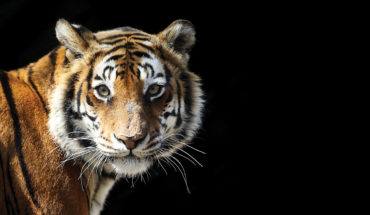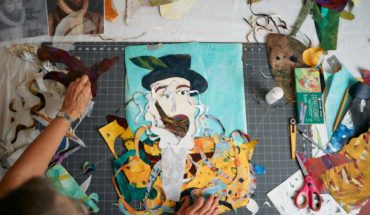For years, the Fearrington Village Folk Art Show in Pittsboro has attracted a cast of artists from all over the Southeast.
by Addie Ladner / photography by Bryan Regan
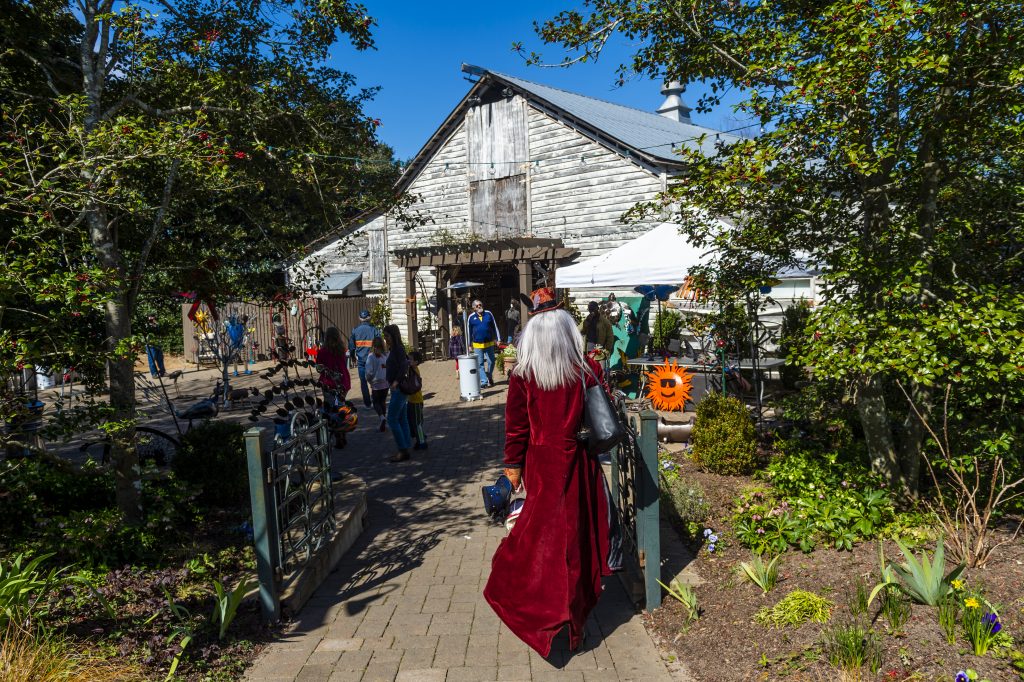
Scraps of tin covered in bright paintings of farm animals, mosaics made from broken glass and bottle caps, a car painted pastel-pink, covered in jelly molds — folk art can be hard to explain, but you know it when you see it.
Approachable and often affordable, folk art is found all over the U.S., but particularly down Highway 15 in Pittsboro. It’s there that, historically, folk artists and enthusiasts gather each winter for the annual Fearrington Folk Art Show.
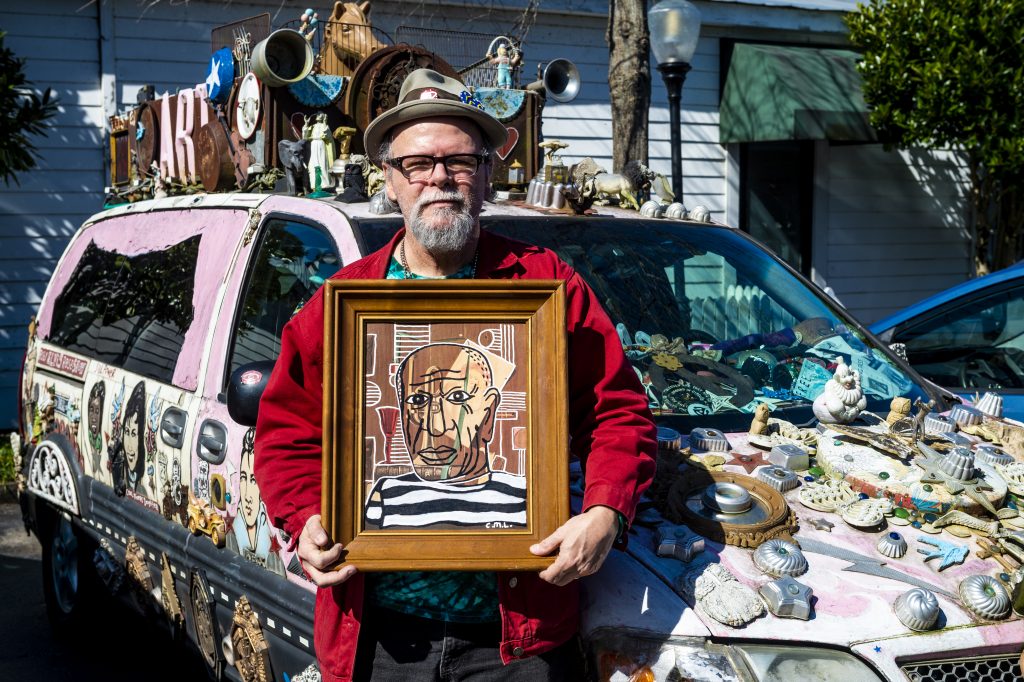
“If you get invited to the Fearrington Folk Art Show, you feel like you made it,” says folk artist Charlie Frye, who hails from Lenoir. The show started 18 years ago when R. B. Fitch, the owner of Fearrington Village, took a liking to the quirky art genre on his travels. He wanted a place to gather the personalities behind the pieces he collected and to share their work with his community. “He loved the color and that it comes from the spirit inside these folks. These artists do it out of a need to do it,” says Kerstin Lindgren, Fearrington Village’s marketing director, who’s also a folk art enthusiast.
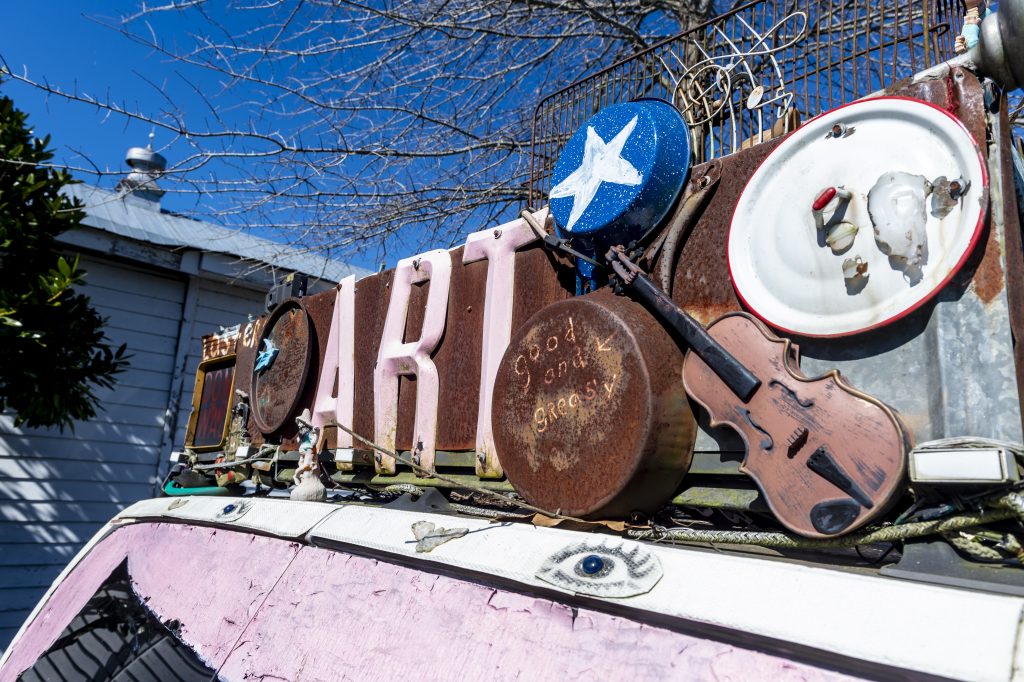
Artists aren’t charged to show and sell at the show, or asked for a commission. It’s invitation-only and the artists are treated like guests. They’re fed BBQ dinners at Fearrington and hosted for free at local bed and breakfasts like the Rosemary House (owned by folk art collectors) and the Small Museum of Folk Art and B&B. “It’s fascinating to meet these people when they stay with us,” says Small Museum owner Dave Clark.
Today, it’s one of the best-known and most-respected folk art shows in the Southeast, in part because of Fearrington’s hospitable approach. For Fearrington Village, it’s about celebrating these artists while helping them make a living. And for the artists, it’s as much about showing their work as it is about gathering as a community.
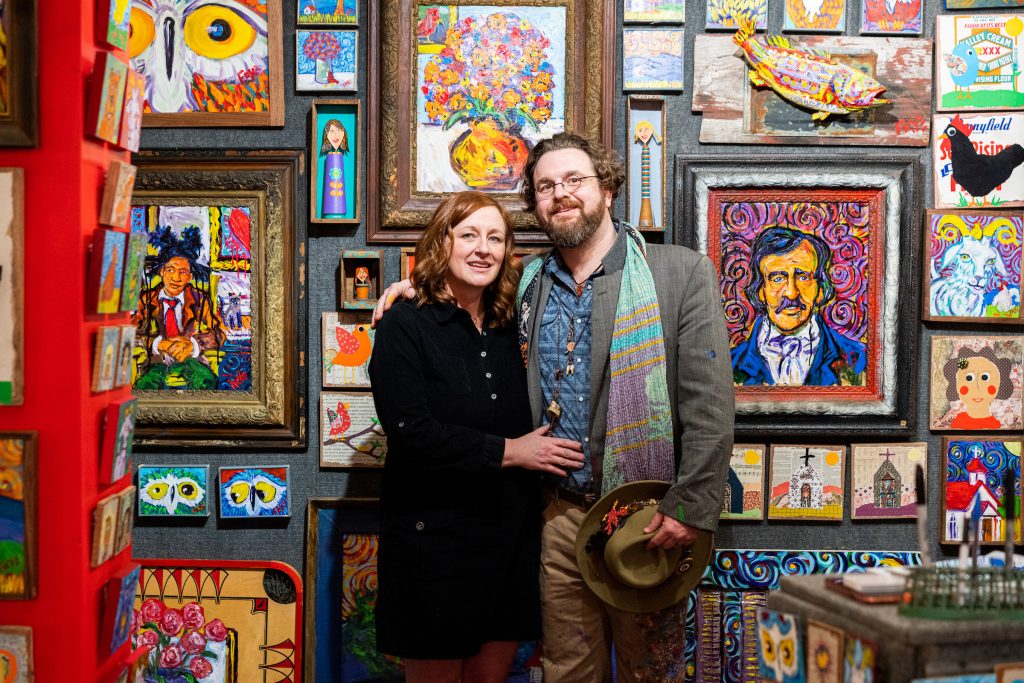
“We’re probably the most approachable group of artists you will ever meet,” says Charlie Frye. “Most of us are good friends, just enjoy making our art and making people smile.”
Often made from repurposed items recombined in vibrant colors, folk art is scrappy multimedia, usually made by self-taught artists. The art is often a visual narrative of the maker’s experience, presented without pretense. For Frye, that means giving glimpses into his upbringing in the mountains of western North Carolina with barn doors as his canvas. “It’s the inspiration from my memories and dreams,” he says of his bold paintings of mountains and farm animals.
His wife Susan Frye’s work is a mix of torn paper art and sculpture. “I tend to make things I like: angels and little girls, things that make you feel good, pleasant memories,” she says. Her latest art pulls from a bittersweet childhood — she had a strained relationship with her adoptive parents, but recently, amid the pandemic, reconnected with her birth mother.
“I just ended up doing a DNA ancestry test and never thought I’d have a relationship with her,” Susan Frye says. “We connected at the beginning of the pandemic and it’s inspired my work lately.”
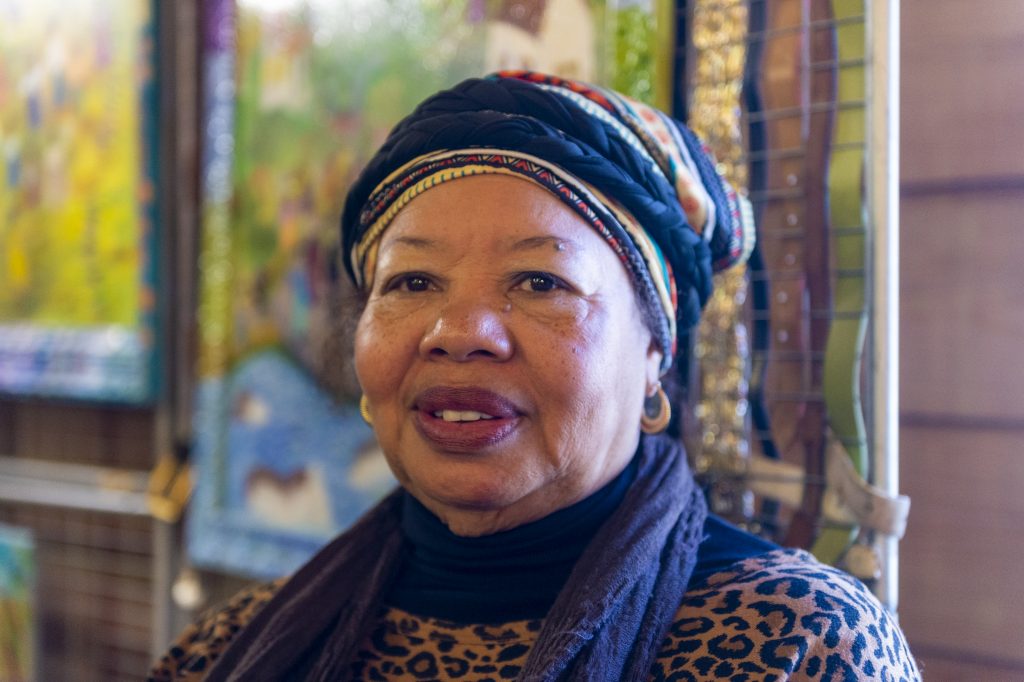
Theresa Gloster, who’s also from Lenoir, paints whimsical scenes of children together in a bedroom or church that recall her childhood in a rural Black community. She has attended the show every year since its inception. At the start of the pandemic, she found it hard to create — until she revisited some paintings she did around the turn of the century that were surprisingly pertinent.
“People were nervous about starting the year 2000,” she says, reflecting on Y2K, then considering a painting she made in 2005 when Pope John Paul II passed away. “I had painted a big group of people mourning; they were trying to get inside a church.” She sold those pieces, then felt inspired to paint again.
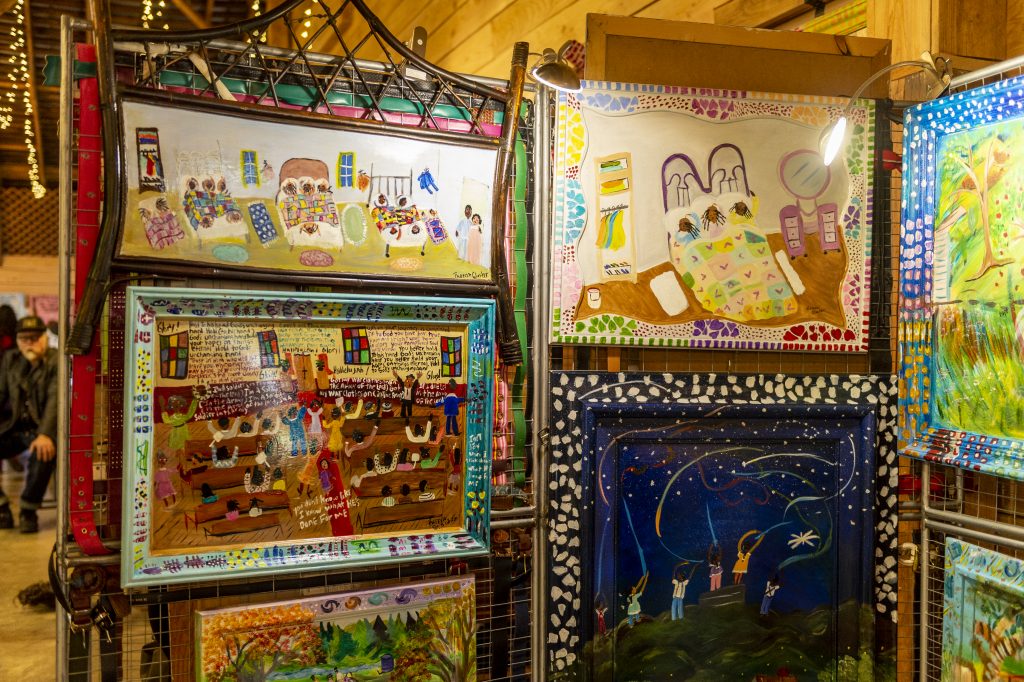
“It fills a void inside me — God gave me a gift to touch someone else’s life,” Gloster says. Kentucky-based Charles Laster got his start in folk art about 30 years ago. He was working in construction and started making things from recycled items he’d collect on the job. It was fulfilling for him, a reminder that you can make something from nothing. The side hobby ballooned when he felt called to work with underprivileged children.
“I wanted these kids to know they don’t need art supplies to make art,” says Laster. He draws inspiration from both pop culture and classic artists. For the past nearly 20 years, you’d find him and his wife, Grace, driving South in an unusually decorated Pontiac Montana to Fearrington. The Inner-Galactic-Shack-o-LLac, as they call it, is an example of a “true art car,” he says. Painted in pink and covered in knick-knacks — bull horns on the front bumper; pieces of wrought iron, animal figurines and more on the hood and roof — it has more than 400,000 miles on it.
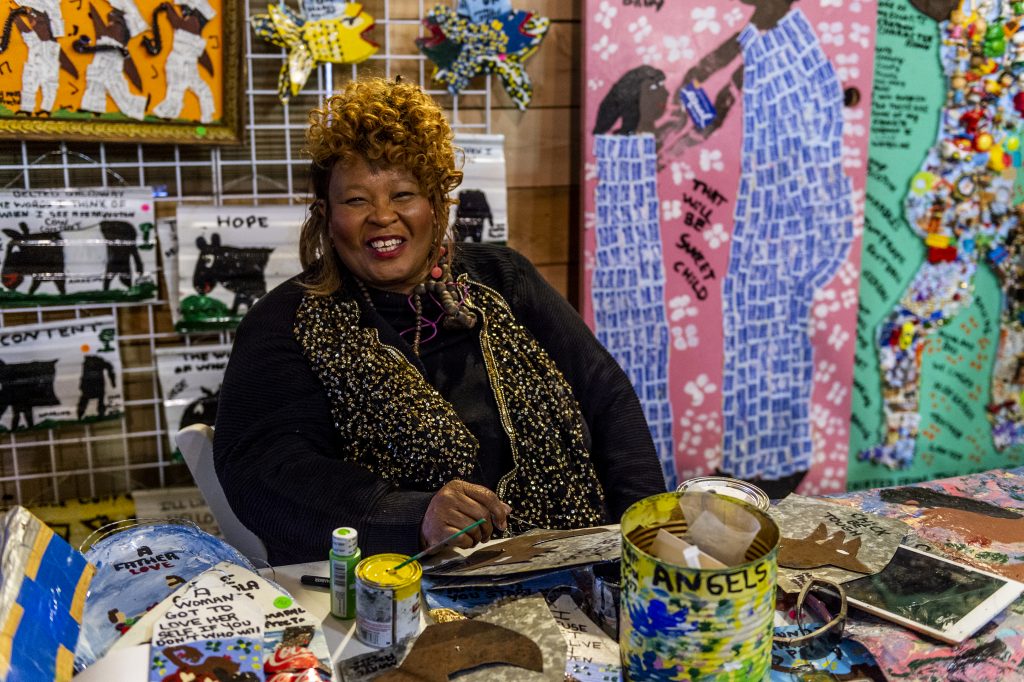
During the show, these artists get to enjoy being around like-minded makers while generating a bit of income, in an area of the state that supports their niche. “Pittsboro and Fearrington are such a magic square of 10 miles. It’s our second home,” says Charlie Frye.
This year, the Inner-Galactic-Shack-o-LLac won’t be driving to Fearrington Village. Like most other events that have been canceled since March of last year, art shows are no exception. “No show this year was a huge blow. We actually cried when they canceled it,” says Charlie Frye. Galleries, art shows, lessons: these human-to-human experiences are vital for artists, both financially and mentally.
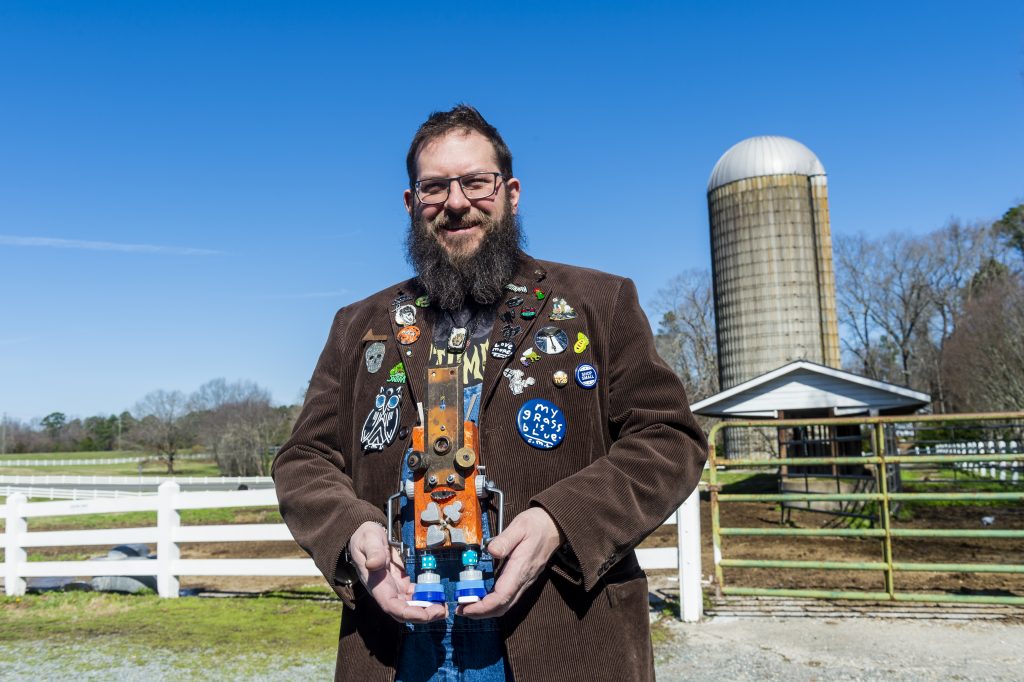
To help with this, the team at Fearrington Village set up a website that will allow people to engage with these artists directly and artists and their supporters are leveraging platforms like Etsy and social media to connect. “Whatever we can do to support these artists right now, when it’s hard to congregate like we usually do this time of year, we will do it,” says Clark.
And while they will be missing their cohorts at Fearrington Village come February, these artists are leaning into what they know best as a way to cope, for now. Gloster says, “I tell myself to keep painting, just keep painting.”
Even without an organized Folk Art show this year, there are still plenty of ways to experience this community. Read our 9 ways to experience the close-knit town, folksy of Pittsboro here.


